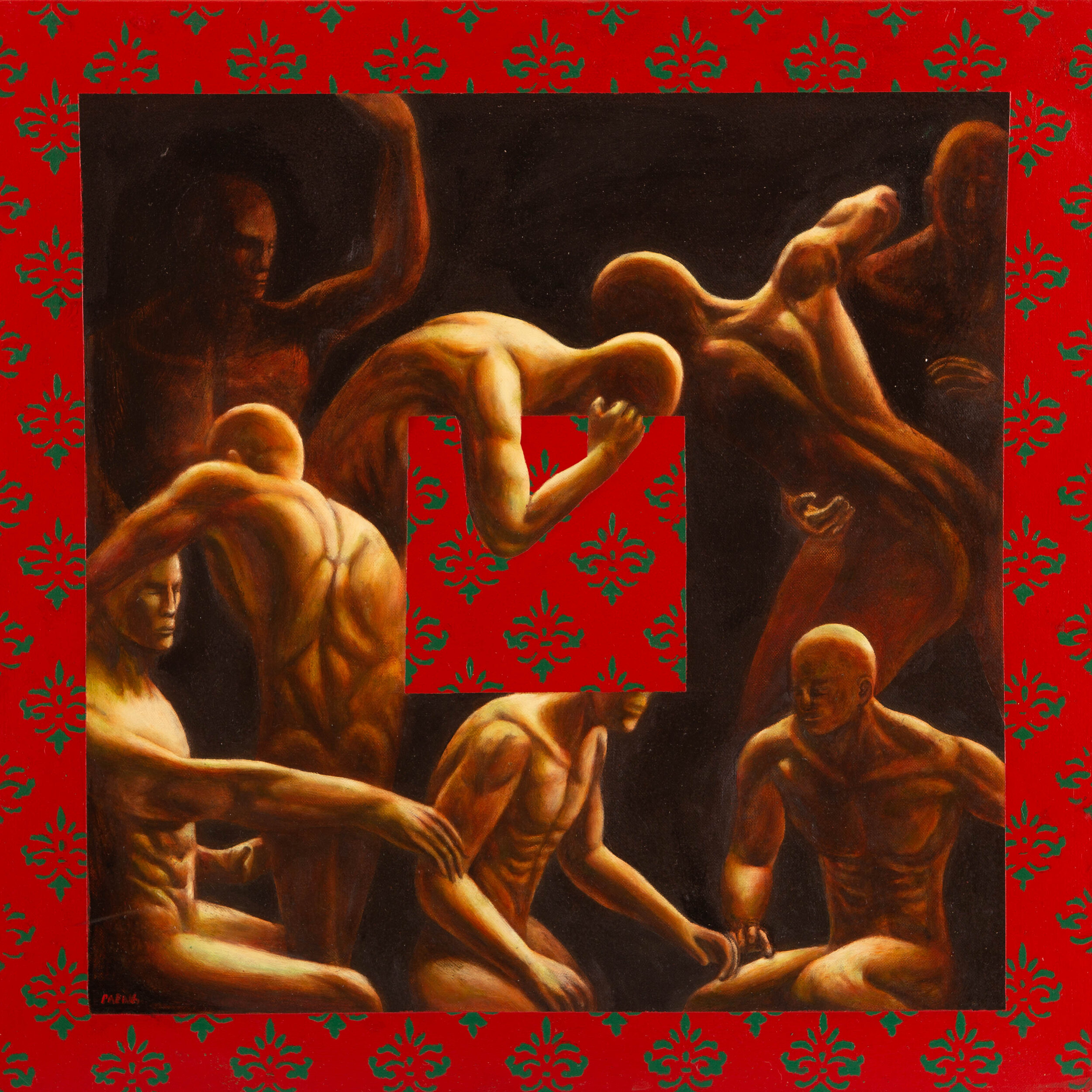
TIME BOUND:
Wise Man
Paeng Fabros
This series of works takes inspiration from various human scientific studies on human evolution, survival traits and natural selection. It inquires into the idea that we are mere byproducts of circumstances that attended the evolution of man.
The most significant leap / 24”x24” / Oil on Canvas
Bipedalism is the movement of two feet with an upright body by a terrestrial animal. This trait helped our ancestors discover land and migrate to where nature provided them with food and shelter.
Cognitive Tradeoff Hypothesis / 24”x24” / Oil on Canvas
Professor Tetsuro Matsuzawa, a Japanese primatologist, conducted a scientific study on over 60 species of primates. Data collected from his research suggests that primates have extraordinary and complex short-term memory abilities, surpassing even humans. Professor Matsuzawa believes that humans may have shared these superior skills in the past - and perhaps even had photographic memories - but these were lost in a trade-off: the use of language for diminished memory abilities.
Intersection of species / 24”x24” / Oil on Canvas
A hundred thousand years ago, Eurasia was home to several human species, which spread from Africa. Recent research suggests that during this period, Homo sapiens interbred with Neanderthals and Denisovans. Some scientists believe that modern humans evolved through assimilation with these different species.
We die alone / 24”x24” / Oil on Canvas
To survive, our ancestors did not only need to learn how to live in the wild. They also had to figure out how to survive within a group. They needed each other. Without social support, one would have to live alone, subject to the elements and uncertain access to food and shelter. He or she would not last long. The fear of being alone - especially today - is then partially explained. It is a fear, born of the desire for self-preservation, that we inherited from our ancestors.
The two essentials / 24”x24” / Oil on Canvas
Serotonin and dopamine are two neurotransmitters in our brain and gut that give us the feeling of pleasure. Serotonin is responsible for our feelings and emotions, while dopamine is released when we feel loved, motivated, and satisfied.
An imbalance in levels of either one can affect mental health, digestion, and sleep cycles. They affect us in similar yet distinct ways that we have yet to fully understand. The pleasure we derive from their release can sometimes dominate our behavior, ability to think critically, and decision-making.
This project is dedicated to my grandfather who recently passed. I imagine it as a form of a missed dialogue, a chance to talk with him about my ideas, about my interest in science and how I imagined this project to be realized. I wasn’t able to do that…but I wished I could have discussed this with him. For my Lolo Jack, the Wise Man. -PF

